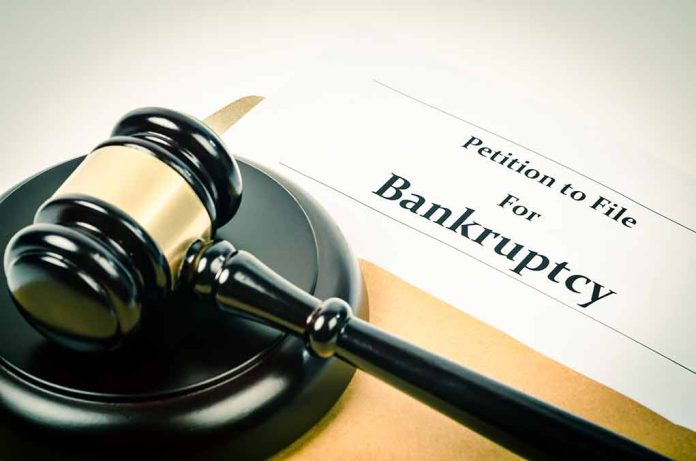
CVS, Walgreens, and major grocery chains carve up Rite Aid’s 1,000+ pharmacy assets in bankruptcy court, marking the second Chapter 11 filing for the struggling retailer in less than two years.
Key Takeaways
- A federal bankruptcy court in New Jersey approved the sale of Rite Aid’s pharmacy assets to CVS Health, Walgreens, and grocery chains, including Kroger and Albertsons.
- CVS will acquire prescription files from 625 Rite Aid pharmacies across 15 states and operate 64 physical Rite Aid stores in Idaho, Oregon, and Washington.
- The asset sale primarily focuses on prescription files rather than physical stores, allowing buyers to avoid taking on additional debt from retail locations.
- Rite Aid found buyers for customer files at 810 stores but failed to locate buyers for approximately 200 other locations.
- The sale follows Rite Aid’s second Chapter 11 bankruptcy filing in less than two years, highlighting the financial pressures facing traditional retail pharmacies.
Major Pharmacy and Grocery Chains Divide Rite Aid’s Assets
The U.S. Bankruptcy Court for the District of New Jersey has formally approved Rite Aid’s proposal to sell pharmacy assets from more than 1,000 stores to several major retail chains. CVS Health, Walgreens, and grocery giants, including Kroger and Albertsons, will acquire these assets, primarily focusing on prescription files rather than physical store locations. This transaction represents a significant consolidation in the retail pharmacy sector, with CVS taking the largest share of the available assets in the deal.
“We’re working closely with Rite Aid on plans to ensure that the transition will be seamless for patients and customers, and access to pharmacy care is not interrupted. Once the sale is finalized, we look forward to welcoming Rite Aid colleagues who are interested in applying to join the CVS team,” stated CVS
CVS Pharmacy’s portion of the acquisition includes prescription files from 625 Rite Aid pharmacies spanning 15 states, as well as the operation of 64 complete Rite Aid stores located in Idaho, Oregon, and Washington. Walgreens, Albertsons, Kroger, and Giant Eagle will purchase the remaining pharmacy assets. While the sale prices have not been disclosed publicly, these transactions still require regulatory approvals and must meet customary closing conditions before being finalized.
Rite Aid’s Second Bankruptcy Filing in Two Years
The Philadelphia-based Rite Aid filed for Chapter 11 bankruptcy protection specifically to facilitate this asset sale, marking its second bankruptcy filing in less than two years. This pattern highlights the severe financial pressures facing traditional retail pharmacies in today’s market. According to Rite Aid’s website, the company currently operates more than 1,200 stores across 15 states, but the company has struggled to remain competitive against larger chains and new market entrants.
“A key priority for Rite Aid is to ensure that as many of our loyal customers as possible continue to receive the pharmacy services and care they require without interruption. These agreements ensure our pharmacy customers will experience a smooth transition while preserving jobs for some of our valued team members,” said Matt Schroeder, CEO of Rite Aid.
Notably, Rite Aid was only able to secure buyers for customer files at 810 of its stores, failing to locate buyers for approximately 200 other locations. This discrepancy indicates that while the prescription business remains valuable, many physical store locations may no longer be considered viable in the current retail pharmacy landscape. Many Rite Aid stores will remain open during the transition period, but the long-term future of locations not included in the current asset sale remains uncertain.
Historical Context and Industry Consolidation
This is not the first time Rite Aid has been involved in major industry consolidation efforts. Both Walgreens and Albertsons, two of the current purchasing companies, previously attempted to merge with Rite Aid but were unsuccessful in completing full acquisitions. In 2017, Walgreens did manage to acquire 1,932 Rite Aid stores and three distribution centers for $4.4 billion, significantly reducing Rite Aid’s national footprint even before the current asset sale.
“Additional details will be available closer to the transaction closing dates in the coming weeks,” stated CVS
The acquisition of prescription files during bankruptcy proceedings has become common practice in the retail pharmacy industry. In 2019, Walgreens, CVS, and Rite Aid all acquired prescription files from Shopko during its financial restructuring. By focusing primarily on prescription files rather than physical store locations, the acquiring companies can expand their customer bases without taking on the financial burden of additional retail space, especially as more pharmacy transactions move online and physical foot traffic continues to decline.





